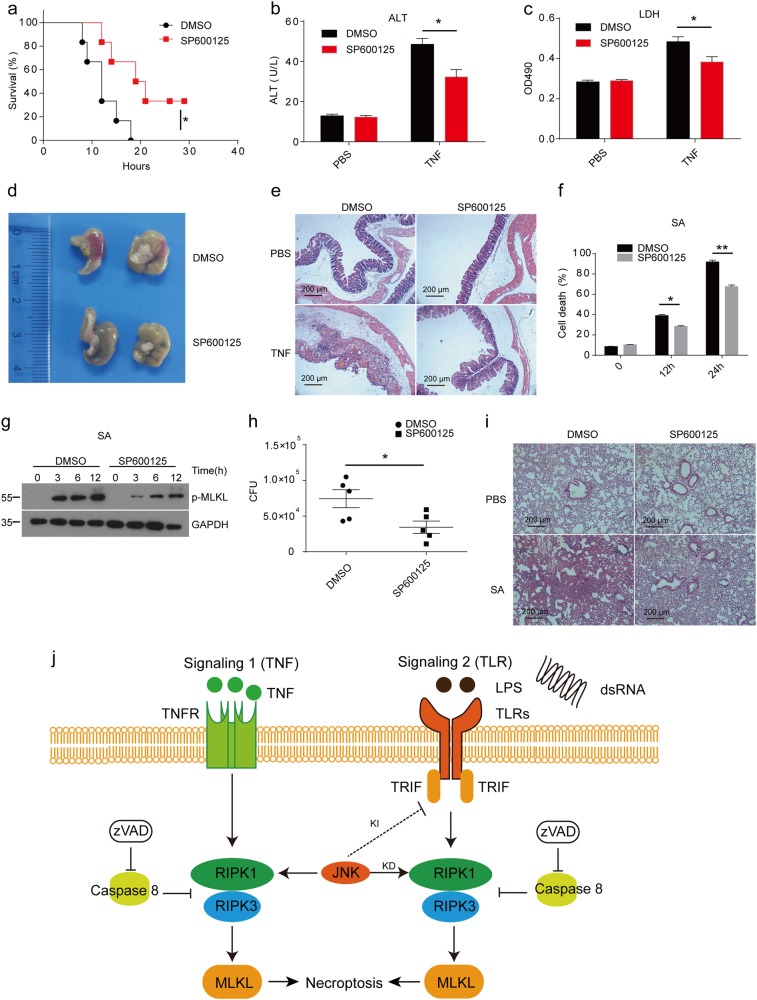Fig. 7. JNK inhibition with SP600125 protects mice from TNF-induced SIRS and Staphylococcus aureus-mediated lung damage.
a Wild-type mice were injected i.p. with DMSO (n = 6) or SP600125 (n = 6) for 30 min prior to a challenge with 15μg of TNF per mice through the tail vein. Mouse survival was monitored. b, c Plasma samples of mice treated with DMSO or SP600125 were collected 12h after challenge with TNF or PBS and analyzed for activities of ALT (b) and LDH (c). d Macroscopic view of the representative cecums from mice treated as in a for 12h. e H&E histology of the representative cecums from mice treated as in b and c. Photomicrographs of histology are shown at 100× magnification. f Peritoneal macrophages were pretreated with DMSO or SP600125 for 30 min and then treated with MOI 1 Staphylococcus aureus (SA) for the indicated time. Cell death was measured by released LDH. g Immunoblot analysis of peritoneal macrophages pretreated with DMSO or SP600125 for 30 min and then treated with MOI 1 SA for the indicated time. h Wild-type mice were treated with DMSO or SP600125 and then infected with SA. CFU in the lung was assayed 24h after infection. i H&E histology of the representative lungs from mice treated with DMSO+PBS, SP600125+PBS, DMSO+SA, and SP600125+SA for 24h. Photomicrographs of histology are shown at ×100 magnification. j Model of the kinase-dependent (KD) and -independent (KI) functions of JNK in necroptosis. Data are representative of at least three independent experiments and shown as mean±SEM in graphs b, c, f, and h. *p < 0.05, **p < 0.01 by Student’s t test

